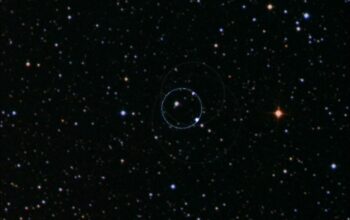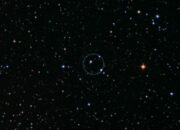The cosmos has long held humanity’s fascination, serving as both a scientific frontier and a canvas for the imagination. Among the myriad phenomena observable in the night sky, the pulsation of certain stars reveals intricate patterns that stimulate inquiry. These fluctuating luminosities prompt a plethora of questions concerning their origins, compositions, and the underlying mechanics that govern their behavior. The observation of these pulsating stars addresses not only the fundamental principles of stellar life cycles but also elicits deeper philosophical inquiries about existence beyond our terrestrial realm.
Pulsating stars, such as those classified as variable stars, exhibit fluctuations in brightness due to underlying physical processes. These variations often arise from changes in the star’s outer layers, whereby expansions and contractions result in cyclical shifts in luminosity. Among the most studied groups of pulsating stars are the Cepheid variables and RR Lyrae stars; both of which are vital to our understanding of stellar evolution and galactic distance measurement. The pulsation period of Cepheids, for example, correlates with their intrinsic brightness, allowing astronomers to use them as ‘standard candles’ to ascertain distances across the universe. This relationship has profound implications, culminating in extensive ramifications for cosmology and our comprehension of the universe’s vast expanse.
At the heart of the pulsation process lies the interplay between opposing forces. Gravity strives to compress the star’s mass inward, while the outward pressure from nuclear fusion within the star’s core counterbalances this force. As helium, hydrogen, or heavier elements transmute through fusion, the resultant energy release generates an outward thermal pressure that can be outstripped by gravitational pull at certain intervals, leading to contraction. As the star contracts, it heats up, augmenting the thermal pressure until it ultimately surpasses gravitational force once more, resulting in expansion. This cycle repeats, manifesting as the observable pulsation.
Further examination into the pulsation mechanics reveals the critical role of the star’s composition, predominantly its temperature and density, in determining the pulsation characteristics. For instance, the fundamental pulsation period of a Cepheid correlates to its mass and effective temperature— a relationship defined by the period-luminosity relationship. Thus, by understanding the intricacies of stellar compositions, researchers can extrapolate the origins of these pulsating entities and their evolving life cycles, transitioning from massive gas clouds to complex stellar structures.
A compelling curiosity arises regarding the influence of these pulsating stars on various cosmological themes. Their consistent monitoring has enabled the establishment of the cosmic distance ladder, which provides astronomers and cosmologists the scaffolding necessary to grasp the universe’s expansion rate. By observing the pulsation rates and the associated brightness, researchers are equipped to measure distances to distant galaxies, thus painting a broader picture of cosmic structure. This intersection of stellar behavior and distance measurement invokes a sense of wonder regarding the chaotic beauty and order poised within the universe.
The pulsation of stars also invokes a metaphorical exploration of human existence. Just as these stars fluctuate, so too does the experience of life, characterized by moments of brightness and darkness. The introspective contemplation inspired by these celestial bodies encourages philosophical reflections pertaining to impermanence and cyclicality in the grander fabric of the universe. The pulsating nature emphasizes a rhythm—a cadence intrinsic to the cosmos, resonating with the patterns observed in life itself, encapsulating the notion of resilience against the backdrop of a vast, often indifferent universe.
Intriguingly, the study of pulsating stars has also fostered technological advancements. The meticulous observation of these stars requires sophisticated instrumentation and innovation in observational techniques. Space telescopes like Hubble have expanded our observational capabilities, providing precise measurements of stellar pulsations without atmospheric interferences. The data retrieved from these instruments not only elucidates the behavior of pulsating stars but concurrently drives advancements in computational modeling and astrophysical simulations. The symbiotic relationship between observation and technological innovation exemplifies the profound interconnectedness of scientific endeavors.
Ultimately, the pulsation of stars encapsulates both a physical phenomenon and a profound source of inspiration. The complex dynamics inherent to these celestial bodies reflect the fundamental principles governing the universe while simultaneously serving as a mirror to humanity’s intrinsic patterns. The observation of these mesmerizing oscillations provokes a sense of curiosity that propels scientific exploration and nurtures philosophical reflection. This duality manifests as an invitation to delve deeper into the enigmatic nature of existence, reaffirming humanity’s timeless quest for understanding amid the cosmic expanse.
In summary, pulsating stars are more than mere celestial entities; they are beacons of knowledge and profound sources of inspiration. Their rhythmic dance across the dark tapestry of the night sky serves as a constant reminder of the beauty and complexity of the universe, inviting both scientific investigation and philosophical contemplation. As we continue to explore these bright embodiments of cosmic wonders, one can only ponder the myriad revelations that await in the realms beyond our own.










